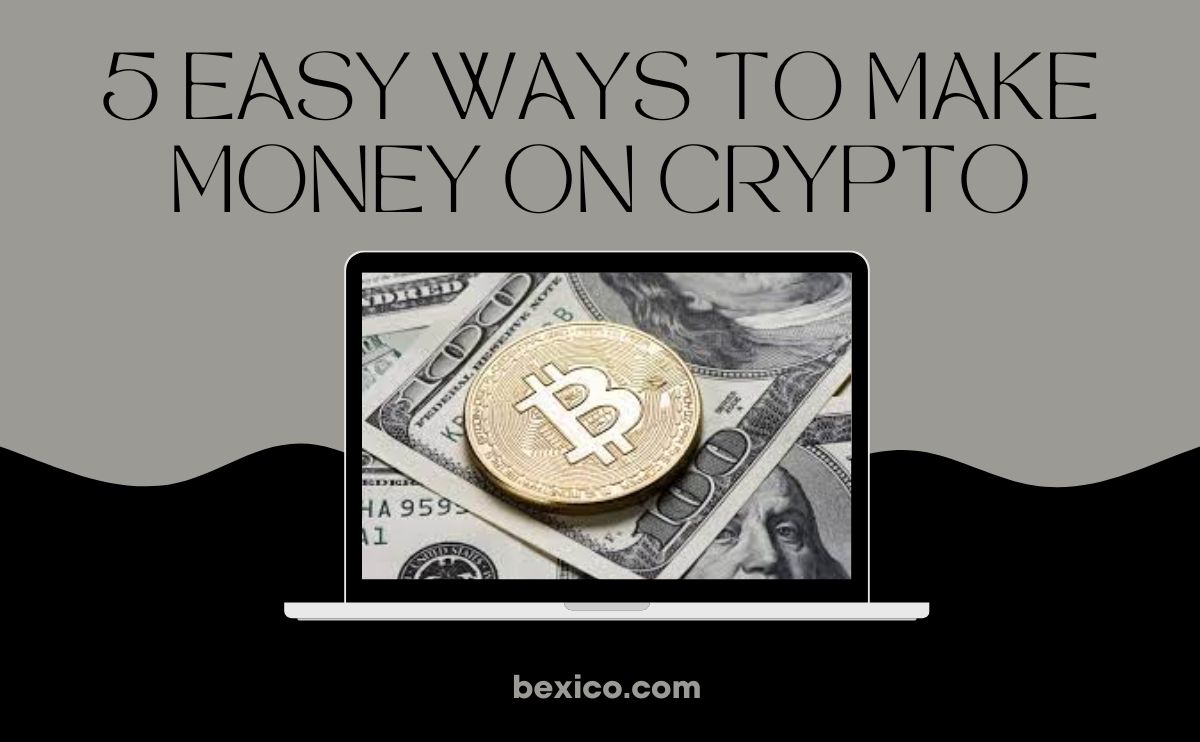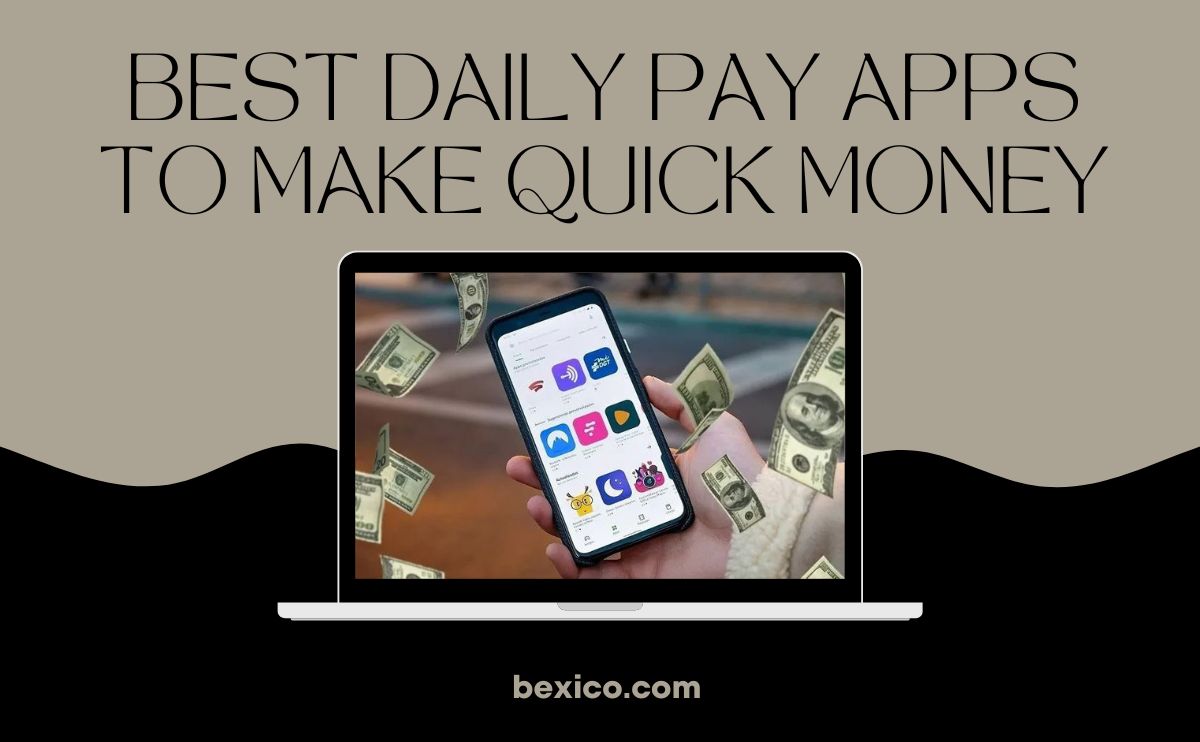Discover 5 Easy Ways to Make Money on Crypto!
Are you ready to unlock the potential of cryptocurrency and start earning more than $1,000 per month, even as a beginner? Dive into our latest blog post where we reveal five simple yet powerful methods to make money in the crypto world. From hassle-free airdrops to exciting crypto games, and from strategic trading to long-term investing, we cover it all. Learn how to leverage the booming NFT market and get practical tips for securing your digital assets. Don’t miss out on these expert insights that can turn your crypto dreams into reality!
Introduction
- Brief introduction of the topic
- Promise of helping beginners make more than $1,000 per month
1. Airdrops and R-Drops
What Are Airdrops and R-Drops?
- Definition and explanation of airdrops
- Definition and explanation of R-drops
- Key differences between airdrops and R-drops
How Airdrops and R-Drops Work
- Purpose of airdrops as a marketing strategy for new projects
- Steps to participate in airdrops
- Setting up a crypto wallet
- Finding projects on crypto sites and Telegram channels
Examples of Successful Airdrops
- Optimism project in 2022: $500 to $1,000 per account
- Arbitrum project in 2023: $1,500 or more per account
Risks and Tips
- Potential risks: not all projects distribute rewards
- Importance of research before participating
- Tips for choosing promising projects
2. Trading
What is Trading?
- Explanation of trading: buying low and selling high
- Key knowledge areas: market understanding, risk management, and patterns
Types of Trading
- Spot Trading: immediate transactions and ownership transfer
- Futures Trading: contracts for future transactions
Trading Strategies
- Market analysis: fundamental and technical analysis
- Risk management and potential for quick gains and losses
- Importance of continuous learning and practice
3. Investing
Difference Between Trading and Investing
- Long-term vs. short-term strategies
- Lower risk and potential for passive income in investing
How to Start Investing
- Research and analysis of projects
- Building an investment portfolio
Practical Steps
- Selecting a reliable exchange
- Storing cryptocurrency in offline wallets for security
- Starting with as little as $20
4. Crypto Games
What Are Crypto Games?
- Explanation and examples of popular crypto games
- History and popularity of crypto games
How to Earn Money from Crypto Games
- Tasks and actions to earn cryptocurrency
- Example: Top Swap and its earning mechanisms
Tips for Maximizing Earnings
- Joining promising projects and referral programs
- Daily participation and account management
5. NFTs
What are NFTs?
- Definition and explanation of NFTs
- Examples of high-value NFTs
Ways to Make Money with NFTs
- Creating and selling NFTs
- Investing in NFTs
Risks and Considerations
- Potential for scams and dubious deals
- Importance of thorough research and safety measures
Conclusion
- Recap of the five methods to make money on cryptocurrency
- Encouragement to research and practice for success
- Final thoughts on the potential and risks of earning with crypto
Call to Action
- Encourage readers to share their experiences
- Invite readers to subscribe for more tips and updates on cryptocurrency
Introduction
Cryptocurrency has revolutionized the financial landscape, providing numerous opportunities for individuals to earn money beyond traditional means. Whether you’re a seasoned investor or a complete novice, the world of crypto offers various avenues to explore and profit from. In this blog post, we’ll delve into five easy ways to make money on crypto, guiding you through each method with practical tips and real-world examples.
After reading this post, even beginners will be equipped with the knowledge to potentially earn more than $1,000 per month. The strategies discussed are accessible and designed to help you navigate the dynamic and often volatile cryptocurrency market.
Today, we’ll explore five main ways to make money on crypto:
- Airdrops and R-Drops – Ideal for beginners with no initial investment required.
- Trading – Involves buying and selling crypto assets for profit.
- Investing – Long-term strategy with lower risks compared to trading.
- Crypto Games – Earn cryptocurrency through engaging and fun activities.
- NFTs – Profit from creating, selling, and investing in non-fungible tokens.
Each method has its unique benefits and risks, but with the right knowledge and approach, anyone can tap into the lucrative world of cryptocurrency. Let’s dive in and discover how you can start making money on crypto today!
1. Airdrops and R-Drops
What Are Airdrops and R-Drops?
Airdrops are a marketing strategy used by cryptocurrency projects to distribute their tokens for free to a large number of people. This method is aimed at increasing awareness and adoption of the project. Typically, participants are required to complete simple tasks such as subscribing to newsletters, joining social media channels, or sharing posts about the project.
R-Drops (retroactive drops) are a special type of airdrop that rewards early supporters and active users of a project. Unlike general airdrops that are open to anyone who completes certain tasks, R-drops specifically target those who have shown loyalty and support from the project’s early stages.
How Airdrops and R-Drops Work
Airdrops and R-drops are designed to create buzz and attract new users to a project. Here’s how they typically work:
- Project Announcement: The project announces an airdrop campaign through various channels such as social media, cryptocurrency forums, and dedicated airdrop websites.
- Task Completion: Participants are required to complete specific tasks, which could include following social media accounts, sharing content, signing up for newsletters, or using the project’s platform.
- Wallet Registration: Participants need to provide their cryptocurrency wallet addresses where the tokens will be sent.
- Token Distribution: After verifying the completion of tasks, the project distributes tokens to the participants’ wallets.
For R-drops, the process is slightly different:
- Snapshot: The project takes a snapshot of its early users and supporters at a specific point in time.
- Activity Verification: The project verifies the activities and contributions of these early users.
- Reward Distribution: Tokens are distributed to the verified early users as a reward for their support.
Examples of Successful Airdrops
Participating in airdrops and R-drops can be highly rewarding. Here are a few notable examples:
- Optimism Project (2022): Participants who joined the project’s airdrop in 2022 received an average of $500 to $1,000 worth of tokens per account.
- Arbitrum Project (2023): This R-drop rewarded active users with tokens valued at $1,500 or more per account.
These examples highlight the potential financial benefits of engaging in airdrops and R-drops.
Risks and Tips
While airdrops and R-drops can be lucrative, there are inherent risks and uncertainties:
- No Guarantees: Not all projects are financially capable of distributing rewards to every participant. Some projects may fail to deliver any tokens despite promising them.
- Scams and Fake Airdrops: The crypto space is rife with scams. Always verify the legitimacy of the project and the airdrop before participating.
- Uncertain Conditions: Often, the conditions for receiving tokens are not transparent, and participants may not know when or how much they will receive.
To maximize your chances of success, consider these tips:
- Research: Look into the project’s background, team, investors, and partnerships. Well-funded and reputable projects are more likely to fulfill their airdrop promises.
- Follow Reliable Sources: Join reputable crypto forums and Telegram channels that regularly update on genuine airdrop opportunities.
- Be Cautious with Personal Information: Only share your wallet address and avoid giving out sensitive personal information.
By staying informed and cautious, you can effectively participate in airdrops and R-drops, making them a valuable entry point into the world of cryptocurrency.
2. Trading
What is Trading?
Trading in the cryptocurrency market involves buying and selling crypto assets to make a profit from short-term price movements. Unlike long-term investing, trading focuses on taking advantage of market volatility and price fluctuations over shorter periods. This requires a good understanding of market dynamics, risk management, and various trading strategies.
Types of Trading
Spot Trading and Futures Trading are the two primary types of trading in the cryptocurrency market.
Spot Trading:
- Immediate Transactions: Spot trading involves buying and selling cryptocurrencies for immediate delivery. When you purchase a cryptocurrency in the spot market, you take ownership of it right away.
- Direct Ownership: You own the actual cryptocurrency, which you can hold in a wallet, trade, or use for other transactions.
- Simple and Accessible: Spot trading is straightforward and ideal for beginners. The main strategy is to buy low and sell high.
Futures Trading:
- Contract-Based: Futures trading involves buying and selling contracts that obligate the parties to trade an asset at a predetermined price on a specific future date.
- Speculation on Price Movements: Futures trading allows you to speculate on both rising and falling markets. You can take long positions (betting the price will go up) or short positions (betting the price will go down).
- Higher Risk and Complexity: Futures trading can be more complex and riskier compared to spot trading. It often involves leverage, which can amplify both gains and losses. Due to its complexity, it is generally not recommended for beginners.
Trading Strategies
To be successful in trading, you need to develop effective strategies based on thorough market analysis. Here are some key concepts and strategies:
Market Analysis:
- Fundamental Analysis:
- Project Evaluation: Assess the intrinsic value of a cryptocurrency by examining the project’s fundamentals, such as its technology, team, roadmap, and market demand.
- News and Events: Stay informed about news and events that could impact the market, such as regulatory developments, partnerships, and technological advancements.
- Technical Analysis:
- Price Charts: Analyze historical price charts to identify patterns and trends that can predict future price movements.
- Indicators and Tools: Use technical indicators like Moving Averages, Relative Strength Index (RSI), and Bollinger Bands to make informed trading decisions.
- Stop-Loss Orders: Set stop-loss orders to automatically sell a cryptocurrency if its price falls to a certain level, limiting potential losses.
- Position Sizing: Determine the appropriate size of each trade relative to your total portfolio to manage risk effectively.
- Diversification: Spread your investments across different cryptocurrencies to reduce risk.
- Day Trading: Involves buying and selling cryptocurrencies within a single day. Day traders aim to capitalize on short-term price movements and often execute multiple trades per day.
- Swing Trading: Focuses on capturing price movements over a few days to weeks. Swing traders look for opportunities based on short- to medium-term trends.
- Scalping: A high-frequency trading strategy that involves making numerous small profits from tiny price changes throughout the day.
- Arbitrage: Involves buying a cryptocurrency on one exchange where the price is low and simultaneously selling it on another exchange where the price is higher, profiting from the price difference.
- Market Volatility: Cryptocurrency markets are highly volatile, and prices can change rapidly, leading to potential losses.
- Emotional Trading: Making decisions based on emotions rather than analysis can lead to poor outcomes. It’s crucial to remain disciplined and stick to your trading plan.
- Leverage Risks: Using leverage in futures trading can amplify both gains and losses, increasing the risk of significant financial loss.
- Long-Term Growth: Investing allows you to benefit from the long-term appreciation of cryptocurrency values.
- Passive Income: Some cryptocurrencies offer staking rewards or dividends, providing a source of passive income.
- Lower Risk: Compared to trading, investing is generally less risky as it doesn’t require frequent buying and selling based on market volatility.
- Research and Education:
- Understand the Market: Before investing, it’s crucial to understand the basics of cryptocurrency, blockchain technology, and the market dynamics.
- Study Projects: Research different cryptocurrency projects to evaluate their potential. Look into the project’s goals, technology, team, partnerships, and community support.
- Building an Investment Portfolio:
- Diversification: Spread your investments across multiple cryptocurrencies to reduce risk. A diversified portfolio can help mitigate losses if one asset underperforms.
- Allocation: Decide how much to allocate to each cryptocurrency based on your risk tolerance and investment goals. Consider a mix of established cryptocurrencies (like Bitcoin and Ethereum) and promising altcoins.
- Selecting an Exchange:
- Choose a Reputable Exchange: Use well-known and secure cryptocurrency exchanges to buy and sell your assets. Examples include Coinbase, Binance, and Kraken.
- Consider Fees and Trading Pairs: Different exchanges have varying fee structures and available trading pairs. Select an exchange that suits your needs in terms of cost and available assets.
- Secure Storage:
- Cryptocurrency Wallets: For long-term storage, use secure cryptocurrency wallets rather than keeping your assets on exchanges. Wallets can be hardware-based (like Ledger or Trezor) or software-based (like Exodus or Trust Wallet).
- Offline Storage: Hardware wallets store your assets offline, reducing the risk of hacking and theft. Always keep your private keys secure and never share them.
- Regular Investments: Invest a fixed amount of money at regular intervals (e.g., weekly or monthly) regardless of the cryptocurrency’s price. This strategy reduces the impact of volatility and avoids trying to time the market.
- Long-Term Holding: Purchase cryptocurrencies and hold them for an extended period, ignoring short-term market fluctuations. This strategy relies on the belief that the value of the asset will increase over time.
- Finding Undervalued Assets: Identify and invest in cryptocurrencies that are undervalued by the market but have strong fundamentals and growth potential.
- Earning Passive Income: Invest in cryptocurrencies that offer staking rewards or participate in yield farming. Staking involves holding and locking up tokens to support network operations and earn rewards. Yield farming involves providing liquidity to decentralized finance (DeFi) platforms in exchange for interest or additional tokens.
- Research: Conduct thorough research before investing in any cryptocurrency. Understanding the project’s fundamentals can help you make informed decisions.
- Stay Updated: Keep up with the latest news and developments in the cryptocurrency market. Regulatory changes, technological advancements, and market trends can impact your investments.
- Risk Tolerance: Assess your risk tolerance and invest accordingly. Cryptocurrencies are highly volatile, and it’s important to invest only what you can afford to lose.
- Exit Strategy: Have a clear exit strategy for your investments. Determine your target profit levels and conditions under which you would sell your assets.
- Bitcoin (BTC):
- Early Adoption: Investors who bought Bitcoin in its early years (2010-2013) and held it have seen substantial returns. Despite several price crashes, Bitcoin’s long-term trend has been upward.
- HODLing Strategy: Many Bitcoin investors adopt the HODL strategy, holding onto their coins through market fluctuations in anticipation of long-term gains.
- Ethereum (ETH):
- Smart Contract Platform: Ethereum’s value has grown significantly due to its smart contract functionality and the rise of decentralized applications (dApps).
- Staking in Ethereum 2.0: With the transition to Ethereum 2.0, investors can now stake their ETH to earn rewards, adding another layer of potential income.
- Binance Coin (BNB):
- Exchange Utility Token: Binance Coin has grown in value as Binance, one of the largest cryptocurrency exchanges, has expanded its ecosystem. Holding BNB offers benefits such as reduced trading fees on the platform.
- Diversification: BNB showcases the potential of investing in utility tokens that offer tangible benefits within a larger ecosystem.
- Blockchain Integration:
- Ownership and Scarcity: Blockchain ensures that in-game items, characters, and other assets are unique and scarce. This makes them valuable and tradable.
- Smart Contracts: These are self-executing contracts with the terms of the agreement directly written into code. They automate processes within the game, such as rewarding players with cryptocurrency for completing tasks.
- Earning Cryptocurrency:
- In-Game Actions: Players can earn cryptocurrency by participating in various in-game activities, such as completing quests, winning battles, or even just logging in daily.
- Rewards: The earned cryptocurrency can be native to the game or be a more established cryptocurrency like Ethereum.
- Trading and Selling:
- Marketplaces: Players can trade or sell their in-game assets and earned cryptocurrency on decentralized marketplaces. These assets include items, characters, skins, and more.
- Liquidity: The integration with blockchain allows for easy conversion of in-game assets to real-world value.
- CryptoKitties:
- Concept: Players collect, breed, and trade virtual cats, each represented as a unique token on the Ethereum blockchain.
- Earning Potential: Rare CryptoKitties have been sold for substantial amounts, demonstrating the potential to earn significant profits.
- Axie Infinity:
- Concept: Players breed, raise, and battle fantasy creatures called Axies. The game has its own native tokens, AXS and SLP, which can be earned through gameplay.
- Earning Potential: Players can earn by battling other players, breeding rare Axies, and participating in the game’s economy.
- Decentraland:
- Concept: A virtual world where players can buy, sell, and build on virtual land parcels. The game uses the MANA token.
- Earning Potential: Players can earn by developing their land, creating experiences, and selling virtual real estate.
- Choose a Game:
- Research: Look for games with strong communities, active development teams, and clear earning mechanisms.
- Read Reviews: Check reviews and player feedback to ensure the game is reputable and worth your time.
- Set Up a Wallet:
- Cryptocurrency Wallet: You’ll need a wallet to store the cryptocurrency you earn. Options include MetaMask for Ethereum-based games or Trust Wallet for a broader range of cryptocurrencies.
- Acquire Cryptocurrency:
- Buy Cryptocurrency: Purchase the required cryptocurrency to get started. For example, you might need ETH for Ethereum-based games.
- Fund Your Wallet: Transfer the cryptocurrency to your wallet to use within the game.
- Play and Earn:
- Engage with the Game: Start playing the game and participating in activities that earn you cryptocurrency.
- Monitor Earnings: Keep track of your earnings and market values of in-game assets.
- Market Volatility: The value of earned cryptocurrency can be highly volatile, affecting the real-world value of your in-game earnings.
- Scams and Fraud: Be cautious of fraudulent games or platforms that promise high returns but don’t deliver.
- Time Investment: Some games require significant time investment to earn meaningful rewards.
- Regulatory Risks: The regulatory environment for cryptocurrencies and blockchain games is evolving, which could impact the future of these games.
- Choose Promising Projects: Focus on games with strong development teams, active communities, and clear roadmaps.
- Stay Updated: Follow the latest news and updates about the games you’re involved in to take advantage of new opportunities and avoid potential pitfalls.
- Engage in Communities: Join community forums, Discord servers, and social media groups related to the game to learn tips and strategies from other players.
- Diversify: Don’t put all your effort into one game. Explore multiple games to spread your risk and increase your earning potential.
- Leverage Referrals: Many crypto games offer referral programs where you can earn additional rewards by inviting friends to play.
- Blockchain Technology:
- Verification and Ownership: NFTs are created and traded on blockchain platforms, primarily Ethereum. The blockchain verifies the authenticity and ownership of each NFT, ensuring it cannot be duplicated or forged.
- Smart Contracts: These are used to establish the terms of the NFT, including ownership rights, transferability, and royalties. Smart contracts automatically execute these terms when conditions are met.
- Minting:
- Creation: Minting an NFT involves converting a digital file into a digital asset on the blockchain. This process includes adding metadata that describes the asset and its uniqueness.
- Platforms: Artists and creators can use various platforms, such as OpenSea, Rarible, and Mintable, to mint and sell their NFTs.
- Marketplaces:
- Buying and Selling: NFTs can be bought, sold, and traded on specialized marketplaces. These platforms facilitate the exchange between buyers and sellers, often supporting auctions and direct sales.
- Price Determination: The value of an NFT is determined by factors such as rarity, demand, creator reputation, and the perceived value of the asset.
- Creating and Selling NFTs:
- Digital Art: Artists can create and sell digital artworks as NFTs. This market has seen explosive growth, with some pieces selling for millions of dollars.
- Music and Videos: Musicians and filmmakers can mint their works as NFTs, offering unique ownership rights or exclusive content to buyers.
- Investing in NFTs:
- Flipping: Similar to real estate flipping, this involves buying NFTs at a lower price and selling them at a higher price. Success depends on market trends and the popularity of the NFT.
- Long-term Holding: Investors can buy NFTs and hold them long-term, hoping their value will appreciate over time. This strategy is based on the growing acceptance and use of NFTs.
- Royalties:
- Automatic Royalties: Creators can earn ongoing royalties from secondary sales of their NFTs. Every time the NFT is sold to a new owner, a percentage of the sale price goes to the original creator, as specified in the smart contract.
- Gaming and Virtual Worlds:
- In-Game Assets: Players can buy, sell, and trade NFTs representing in-game items, characters, and virtual land. Popular games like Decentraland and Axie Infinity have robust economies built around NFTs.
- Virtual Real Estate: Investors can buy virtual land in blockchain-based virtual worlds, develop it, and sell or lease it for profit.
- Collectibles:
- Digital Collectibles: Similar to physical collectibles like baseball cards, digital collectibles (e.g., CryptoKitties, NBA Top Shot) can be bought, sold, and traded. Their value depends on factors like rarity and demand.
- Market Volatility:
- Fluctuating Values: NFT prices can be highly volatile, with values rising and falling dramatically based on market trends and demand.
- Speculative Nature: The NFT market is largely speculative, with prices driven by hype and investor sentiment rather than intrinsic value.
- Scams and Fraud:
- Counterfeits: While blockchain ensures the uniqueness of an NFT, it doesn’t prevent someone from minting unauthorized copies of digital content. Always verify the authenticity of the seller and the asset.
- Phishing and Hacking: Be cautious of phishing attempts and ensure your digital wallet and accounts are secure.
- Environmental Impact:
- Energy Consumption: The process of minting and transacting NFTs on blockchain platforms like Ethereum consumes significant amounts of energy, raising environmental concerns.
- Regulatory Uncertainty:
- Legal Framework: The regulatory environment for NFTs is still evolving. Changes in regulations could impact the market and how NFTs are traded and taxed.
- Beeple’s “Everydays: The First 5000 Days”:
- Record Sale: Digital artist Beeple sold his NFT artwork for $69.3 million at a Christie’s auction, highlighting the potential for high earnings in the NFT art market.
- CryptoPunks:
- Early Adopters: CryptoPunks, one of the first NFT projects, consist of 10,000 unique collectible characters. Some CryptoPunks have sold for millions, demonstrating the long-term value of early NFT projects.
- NBA Top Shot:
- Sports Collectibles: This platform allows fans to buy, sell, and trade officially licensed NBA collectible highlights. It has generated over $700 million in sales, showcasing the popularity of digital sports memorabilia.
- Do Your Research:
- Understand the Market: Before diving into the NFT market, thoroughly research the space. Understand the types of NFTs available, the technology behind them, and the factors driving their value.
- Evaluate Projects: Look into the project’s team, roadmap, and community. Projects with strong fundamentals and active communities are more likely to succeed.
- Stay Informed:
- Follow Trends: Keep up with the latest trends and news in the NFT space. Follow industry influencers, join relevant social media groups, and participate in discussions.
- Learn Continuously: The NFT market is rapidly evolving. Continuously educate yourself about new developments, platforms, and opportunities.
- Be Cautious:
- Avoid Hype: Don’t buy into hype without doing your due diligence. Ensure you’re making informed decisions based on research rather than FOMO (fear of missing out).
- Secure Your Assets: Use reputable wallets and platforms. Enable two-factor authentication and keep your private keys secure.
- Diversify:
- Spread Your Investments: Don’t put all your money into one NFT or project. Diversify your investments across different types of NFTs and projects to mitigate risk.
- Airdrops and R-Drops:
- Low Barrier to Entry: Ideal for beginners as they require no initial investment.
- Simple Tasks: Involves completing basic tasks like subscribing to social media channels or using a blockchain.
- Potential Rewards: Can yield significant returns, though not all projects guarantee payouts.
- Trading:
- Active Engagement: Requires continuous monitoring of the market and making informed decisions based on market analysis.
- Short-term Gains: Potential for quick profits, but also carries the risk of significant losses.
- Spot and Futures Trading: Beginners should start with spot trading before moving to more complex futures trading.
- Investing:
- Long-term Strategy: Focuses on holding assets for an extended period to achieve substantial returns.
- Lower Risk: Compared to trading, investing typically involves less risk and less frequent decision-making.
- Diversification: Building a well-rounded investment portfolio is crucial for mitigating risks.
- Crypto Games:
- Gamified Earnings: Earn cryptocurrency by participating in games, completing tasks, or collecting in-game assets.
- Fun and Accessible: Combines entertainment with earning potential, attracting a wide audience.
- Variable Earnings: Income can range from minimal to substantial, depending on the game and user engagement.
- NFTs:
- Unique Digital Assets: NFTs represent ownership of distinct digital items like art, music, and virtual real estate.
- Creative Opportunities: Creators can monetize their work, while investors can profit from buying and selling NFTs.
- Market Volatility: The NFT market can be highly volatile, with significant price fluctuations and speculative risks.
- Research and Education:
- Continuous Learning: The cryptocurrency landscape is ever-changing. Staying updated with the latest trends, technologies, and market movements is crucial.
- Informed Decisions: Thorough research and understanding of each method are essential to make informed decisions and minimize risks.
- Risk Management:
- Diversification: Spreading investments across different assets and methods helps reduce risk.
- Security Measures: Using secure wallets, enabling two-factor authentication, and being cautious of scams are vital practices.
- Patience and Discipline:
- Long-term Perspective: Especially for investing, patience is key. Avoid making impulsive decisions based on short-term market fluctuations.
- Consistent Strategy: Developing and sticking to a well-defined strategy will help achieve financial goals.
- Community and Networking:
- Join Communities: Engage with online communities, forums, and social media groups to learn from others, share experiences, and stay informed.
- Networking: Building connections with other crypto enthusiasts can provide valuable insights and opportunities.
- Educate Yourself:
- Research: Dive deeper into the five methods discussed—airdrops and r-drops, trading, investing, crypto games, and NFTs. Understand the basics and then move on to more advanced concepts.
- Courses and Tutorials: Enroll in online courses or watch tutorials on platforms like YouTube, Coursera, or Udemy. Many of these resources are free and provide valuable insights.
- Join the Community:
- Forums and Groups: Join cryptocurrency forums such as Reddit’s r/CryptoCurrency or specialized Facebook groups. Engage in discussions, ask questions, and learn from the experiences of others.
- Follow Influencers: Follow reputable crypto influencers and experts on social media platforms like Twitter and LinkedIn to stay updated with the latest trends and insights.
- Get Started with Airdrops:
- Sign Up: Create accounts on popular cryptocurrency platforms and join Telegram channels or other communities where airdrop opportunities are frequently announced.
- Participate in Tasks: Start participating in tasks required for airdrops. This is a low-risk way to earn your first cryptocurrencies.
- Begin Trading:
- Practice Trading: Use demo accounts on trading platforms to practice without risking real money. This helps you understand the market dynamics and develop trading strategies.
- Start Small: Once comfortable, start with a small amount of money for spot trading. Learn to read charts, understand market trends, and practice risk management.
- Invest Wisely:
- Explore Crypto Games:
- Try Popular Games: Download and start playing popular crypto games like Axie Infinity, Decentraland, or any other game that interests you.
- Earn Rewards: Participate actively in these games to earn cryptocurrency rewards, and consider reinvesting your earnings into other crypto assets.
- Create or Invest in NFTs:
- Mint Your NFTs: If you’re an artist, musician, or content creator, start minting your work as NFTs. Use platforms like OpenSea or Rarible to sell your creations.
- Buy and Sell NFTs: Explore NFT marketplaces and consider investing in NFTs that have potential value. Remember to do your due diligence and verify the authenticity of the assets.
- Keep Learning:
- Continuous Education: The crypto world evolves rapidly. Keep learning about new trends, technologies, and market conditions to stay ahead.
- Attend Webinars and Conferences: Participate in online webinars and virtual conferences to learn from experts and network with other crypto enthusiasts.
- Ensure Security:
- Use Secure Wallets: Store your cryptocurrencies in secure wallets. Hardware wallets are recommended for long-term storage.
- Be Cautious: Be wary of scams and phishing attempts. Only use reputable platforms and double-check URLs before entering any personal information.
- Document Your Experience:
- Blog or Vlog: Share your experiences and learnings through a blog or vlog. This not only helps you document your journey but also allows you to educate and inspire others.
- Social Media: Share your insights, tips, and successes on social media platforms. Engage with your followers and build a community around your crypto journey.
- Help Others:
- Mentor Beginners: As you gain experience, offer guidance and mentorship to new entrants in the crypto space. Helping others can also deepen your understanding and build your reputation in the community.
- Start a blog or website for less than $2.99 per month, save 75% of web hosting, 30 day money back guarantee, free domain, free SSL, free email and much more.
- 9 Best free AI tools for your business or personal use that will blow your mind. You must watch the video.
- Respondent is a platform that pays users for sharing their knowledge and experience. Unlike other similar websites that pay pennies for completing tasks, Respondent pays anywhere from $100 to $750 an hour for participating in studies.
- Wealthy Affiliate: Are you dreaming of a life filled with financial freedom and unlimited opportunities? Look no further than Wealthy Affiliate, the ultimate destination for ambitious individuals who aspire to unlock their true potential in the world of online business.
- Fiverr: If you have specific skills or talents, consider freelancing online. Platforms like Fiverr allow you to offer your services and earn money on your terms.
- Ysense: Get paid for trying new products and services, downloading apps, taking paid surveys, signing up for websites, watching videos and more.
- FreeCash: Get paid for testing apps, testing websites, taking surveys and much more.
- Lootup: Earn cash rewards by taking surveys, playing games, watching videos, simple tasks, and joining free give aways and contests. Sign Up and get $5
- TimeBucks: Earn cash from doing things such as taking surveys, post on Facebook, watching videos, voting, testing website, installing free apps, playing games, performing web searches and much more!
- Slicethepie: Get paid to listen to music, write reviews on new songs, fashion items, accessories and commercials before they are released.
- Pawns App: Enables you to make money instantly. Make passive money online by completing surveys and sharing your internet.
- Hipcamp: Sharing your spot with community of Hipcampers is a great way to connect people with nature while earning some extra revenue. Find Out How Hipcamp Hosts Earn $75,000 Per Year.
Risk Management:
Popular Trading Strategies:
Risks and Considerations
While trading can be profitable, it also involves significant risks:
To mitigate these risks, continuous learning, practice, and the development of a well-defined trading strategy are essential. By staying informed and disciplined, you can navigate the complexities of trading and work towards achieving a stable income from cryptocurrency trading.
3. Investing
What is Investing?
Investing in cryptocurrency involves allocating capital with the expectation of generating a profit or income over the long term. Unlike trading, which focuses on short-term price movements, investing is about holding assets for months, years, or even decades. This strategy aims to benefit from the growth and development of the cryptocurrency market over time.
Benefits of Investing
How to Start Investing in Cryptocurrency
Investment Strategies
Dollar-Cost Averaging (DCA):
Buy and Hold (HODL):
Value Investing:
Staking and Yield Farming:
Managing Risks
Investing in cryptocurrency carries inherent risks. Here are some strategies to manage and mitigate those risks:
Case Studies
Investing in cryptocurrency can be a rewarding endeavor if approached with caution, research, and a long-term perspective. By understanding the market, diversifying your portfolio, and employing effective investment strategies, you can build a solid foundation for potential future gains.
4. Crypto Games
What are Crypto Games?
Crypto games, also known as blockchain games, are digital games that integrate blockchain technology and cryptocurrencies. These games offer players the opportunity to earn cryptocurrency by engaging in various in-game activities, such as completing tasks, battling, or simply clicking on the screen. The earned cryptocurrency can often be traded for other cryptocurrencies or fiat money, providing a novel way to generate income through gaming.
How Crypto Games Work
Crypto games leverage blockchain technology to ensure transparency, security, and true ownership of in-game assets. Here’s how they typically work:
Popular Crypto Games
How to Get Started with Crypto Games
Risks and Considerations
While crypto games offer exciting opportunities, they also come with risks:
Tips for Maximizing Earnings
Crypto games represent a unique fusion of gaming and blockchain technology, offering innovative ways to earn cryptocurrency. By understanding how these games work, choosing reputable projects, and engaging strategically, players can potentially generate significant income while enjoying the gaming experience. However, it’s essential to approach these opportunities with caution, conduct thorough research, and remain aware of the associated risks.
5. NFTs
What are NFTs?
NFTs, or non-fungible tokens, are unique digital assets verified using blockchain technology. Unlike cryptocurrencies such as Bitcoin or Ethereum, which are fungible and identical in value, each NFT has distinct attributes that set it apart, making it one-of-a-kind. NFTs can represent a wide range of digital items, including art, music, videos, virtual real estate, and in-game items.
How NFTs Work
Ways to Make Money with NFTs
Risks and Considerations
Successful NFT Case Studies
Tips for Navigating the NFT Market
NFTs offer a unique and exciting way to earn money in the digital world, from creating and selling digital art to investing in virtual real estate and gaming assets. However, navigating the NFT market requires careful research, strategic planning, and an understanding of the associated risks. By staying informed and cautious, you can take advantage of the opportunities NFTs present while minimizing potential downsides.
Conclusion
Making money with cryptocurrency has become an increasingly accessible and viable opportunity for many, even beginners. The five methods discussed in this blog post—airdrops and r-drops, trading, investing, crypto games, and NFTs—offer diverse avenues to generate income, each with its unique set of advantages, strategies, and risks.
Summary of Methods
Key Takeaways
Final Thoughts
The world of cryptocurrency offers a multitude of ways to make money, from straightforward tasks like participating in airdrops to more complex strategies like trading and investing. Each method has its unique potential and risks, and what works best will depend on your interests, skills, and risk tolerance. By conducting thorough research, practicing good risk management, and continuously learning, you can navigate the crypto space successfully and take advantage of the opportunities it presents. Whether you’re looking to supplement your income or build substantial wealth, the cryptocurrency market offers exciting and diverse possibilities for financial growth.
Call to Action
The world of cryptocurrency is brimming with opportunities, and now is the perfect time to dive in and start exploring the various ways to make money. Whether you’re a complete beginner or someone with a bit of experience, these methods can help you generate income and grow your financial portfolio. Here’s what you can do next to get started on your crypto journey:
Start Small, Learn Big
Take Action
-
Research Projects: Identify promising cryptocurrency projects for long-term investment. Study their whitepapers, team, technology, and market potential.
Diversify: Spread your investments across different projects to minimize risk and maximize potential returns.
Stay Informed and Safe
Share Your Journey
Final Encouragement
Embarking on your cryptocurrency journey can be exciting and rewarding. The key is to start now, no matter how small. Each step you take will bring you closer to understanding the vast opportunities in the crypto world and leveraging them for financial growth. Remember, every expert was once a beginner. So, take the plunge, stay curious, and keep learning. Your future self will thank you for the steps you take today.
FAQs About Making Money on Crypto
What is the easiest way to start making money with cryptocurrency?
For beginners, airdrops and r-drops are the easiest ways to start earning cryptocurrency. These methods require minimal investment and involve simple tasks like subscribing to newsletters or joining social media channels of crypto projects.
Is trading cryptocurrency risky?
Yes, trading cryptocurrency can be risky due to market volatility. It requires a good understanding of market trends, technical analysis, and risk management. Beginners should start with spot trading before exploring more complex options like futures trading.
How much money do I need to start investing in cryptocurrency?
You can start investing in cryptocurrency with as little as $20. The key is to start small, do thorough research, and gradually build a diversified portfolio.
Can I make money by playing crypto games?
Yes, you can earn cryptocurrency by playing crypto games. These games reward players with tokens for completing tasks, participating in game mechanics, or simply clicking on the screen. Earnings can vary widely depending on the game and your level of engagement.
What are NFTs and how can I make money from them?
NFTs (Non-Fungible Tokens) are unique digital assets representing ownership of items like art, music, or virtual real estate. You can make money by creating and selling NFTs, or by buying and selling NFTs as investments. However, the market can be highly speculative and volatile.
How do I ensure the security of my cryptocurrency investments?
Use secure wallets, preferably hardware wallets, for long-term storage of your cryptocurrencies. Enable two-factor authentication on exchanges and wallets, and be cautious of phishing attempts and scams.
What is the difference between investing and trading in cryptocurrency?
Investing in cryptocurrency involves buying and holding assets for the long term to achieve substantial returns over time. Trading, on the other hand, involves frequent buying and selling to profit from short-term price fluctuations. Investing typically carries lower risk and requires less frequent decision-making compared to trading.
Are there any free resources to learn about cryptocurrency?
Yes, there are many free resources available, including online courses, YouTube tutorials, forums, and social media groups. Websites like Coursera, Udemy, and Khan Academy offer courses on cryptocurrency and blockchain technology.
What should I look for before participating in an airdrop?
Before participating in an airdrop, research the project thoroughly. Look at the team behind the project, their investors, the project’s roadmap, and its potential use cases. Ensure the project is legitimate to avoid wasting time on scams.
Can I lose money in the cryptocurrency market?
Yes, you can lose money in the cryptocurrency market due to its volatile nature. Prices can fluctuate rapidly, and there are risks of scams and hacks. It’s important to invest only what you can afford to lose and to use strategies like diversification and risk management to mitigate potential losses.
Best Ways to Make Money Online
Looking for a few quick ways to make money fast?
There are several legitimate ways to make money online, and here are some options to consider:





















